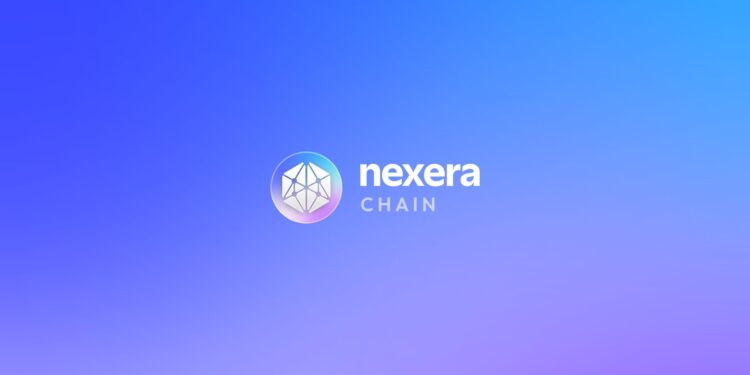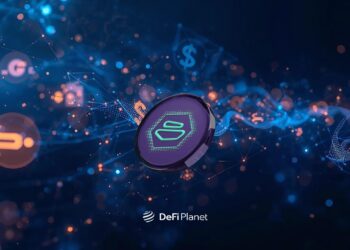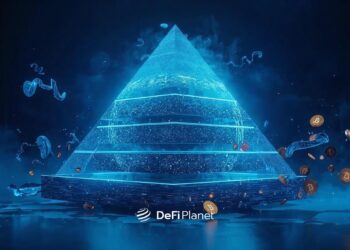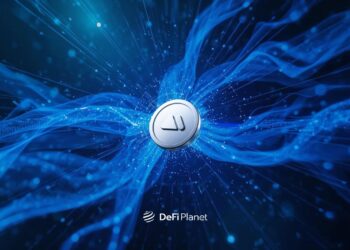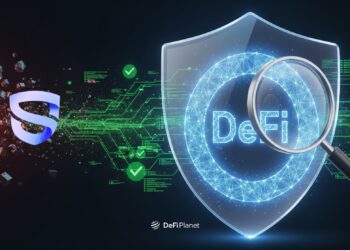The push to bring real-world assets (RWAs), such as real estate, equities, and commodities, into DeFi has intensified in 2025. Tokenizing RWAs offers a path to unlock trillions in previously illiquid markets, increase transparency, and enable 24/7 borderless trading. But today’s DeFi ecosystem is dominated by crypto-native assets like ETH and stablecoins.
Without a secure and legal way to connect real-world assets to DeFi, the space risks staying small and disconnected from traditional finance. Led by Rachid Ajaja, the team behind AllianceBlock rebranded to Nexera with a mission: make it safe and legal to bring real-world assets into DeFi.
They’ve built tools that include identity verification, legal protections, and smart contracts to help tokenize things like property, private equity, invoices, and even carbon credits. But can Nexera really lead the next big step in DeFi by connecting it to the real world?
RELATED: The Role of Real-World Assets (RWAs) in the Next DeFi Boom
Nexera’s RWA Tokenization Framework
Nexera has developed a multi-layered architecture to bring RWAs on-chain securely. Its architecture is made up of several key components that work together to meet the legal, technical, and operational needs of bringing traditional assets into DeFi.
At the heart of Nexera’s system is an onchain identity layer that ensures only verified users can hold or transfer tokenized real-world assets (RWAs). This system supports both KYC (Know Your Customer), KYB (Know Your Business), and KYT (Know Your Transaction), helping issuers meet regulatory requirements directly through smart contracts.
Powering this system is Compilot.ai, Nexera’s AI-driven compliance engine and certified Virtual Asset Service Provider (VASP).
It automates identity checks (KYC, KYB, and KYT), monitors addresses for suspicious activity, and ensures travel rule compliance, all with agent-based AI workflows that turn complex legal rules into simple, automated actions.
Nexera also includes a reusable identity framework that rewards users when their verified data is used across applications. This approach makes compliance easier for businesses while giving individuals more control, and even value, from their personal information.
To help projects follow new rules like Europe’s MiCA regulation, Nexera offers ready-to-use licensing templates and built-in tools that automatically enforce policies. This makes it easier for teams to stay compliant without getting stuck in legal or technical headaches.
Omnichain Capabilities
One of the best things about the Nexera Standard is that it works across many blockchains at the same time. This means tokenized assets, like shares in a real estate project, can be bought, sold, or traded on networks like Ethereum, Binance Smart Chain, and Polygon, all at once.
Let’s say you’re using Ethereum and someone else is using Binance Smart Chain; you can both invest in the same asset without switching networks or dealing with different versions. The asset stays the same no matter which blockchain it’s on, and all the key info about it is kept in sync.
This setup gives the asset more exposure to different markets and makes sure there’s enough money (liquidity) flowing through it. More buyers and sellers from different chains means more opportunities for everyone.
Nexera’s ERC-7208: Enabling Cross-Border Compliance
The Nexera Standard is designed to make it easier to follow the law when trading real-world assets (like real estate or stocks) on the blockchain, no matter what country you’re in.
It works by separating the asset’s data (like who owns what) from the rules (like what each country requires for trading). This makes it possible for the same asset to follow different laws depending on where the buyer or seller is located.
Here’s how it works:
1. One Set of Information for Each Asset
Instead of creating a different version of the asset for every country, Nexera keeps one main copy of the asset that stores all the important details. Think of it like having a single official document for a building or investment, but it’s smart enough to adapt based on who’s trying to use it and where they are.
2. Different Interfaces for Each Country’s Rules
Each country has different laws for buying or trading assets. Nexera uses custom guides (called interfaces) for each country.
- If you’re in Portugal, the system will ask you to verify your identity before you can buy the asset.
- If you’re in Switzerland, you may need to provide different documents or undergo additional checks.
These guides are built into the Nexera system using code. They ensure each person follows only the rules that apply to them, depending on their location.
3. Transferring Assets Between Countries
Let’s say someone in Portugal owns a token and wants to sell it to someone in Switzerland.
Before the new Swiss buyer can use the asset, they need to pass Switzerland’s legal checks. If they don’t, the asset stays frozen until everything is approved.
This system makes sure that:
- Assets don’t move illegally across borders.
- Everyone involved follows the rules.
- Trading stays fair and legal.
A Real-Life Example: Tokenizing a Building
Imagine there’s a big apartment building in Paris. The owner wants to sell pieces of it as digital tokens so people from different countries can invest.
- A person in Portugal wants to buy some tokens. They follow Portugal’s rules and verify their identity.
- Another person in Switzerland wants to buy one too. They go through Switzerland’s requirements.
Nexera’s system keeps track of all this, making sure every token trade is legal, safe, and compliant, no matter who’s buying or where they live.
Key Benefits of Nexera’s Model
Nexera’s model is designed to make tokenizing real-world assets both practical and secure, offering key benefits that help issuers and users operate confidently across jurisdictions.
Security-First Design
Nexera puts compliance and investor protection at the core of its infrastructure. Assets are issued through regulated frameworks that include embedded rules enforced by smart contracts.
With automated KYC, KYB, and KYT processes, only verified participants can access or transfer tokenized assets, reducing fraud and ensuring legal conformity from day one.
Modular Architecture
The Nexera protocol is built with flexibility in mind. Its modular components can be tailored to fit different asset classes, whether it’s real estate, equities, or commodities, and adjusted to meet regional regulatory demands. This plug-and-play approach makes Nexera scalable across multiple jurisdictions and use cases.
Transparency and Auditability
All transactions are recorded on-chain, alongside legal metadata such as ownership history, compliance status, and disclosure logs. This provides regulators, investors, and auditors with a clear, tamper-proof trail, increasing trust in the asset’s legitimacy and improving accountability across the ecosystem.
Liquidity Pathways
By bridging tokenized real-world assets with DeFi, Nexera unlocks new financial opportunities. Token holders can use their assets as collateral for loans, participate in staking protocols, or trade them on secondary markets, turning traditionally illiquid investments into actively usable capital.
Reusable Digital Identity and Data Monetization
Nexera’s identity framework not only verifies users but also rewards them. Verified credentials can be reused across applications, and users are compensated when compliant platforms access their validated data. This encourages broader participation while aligning incentives for both individuals and service providers.
Threats to Nexera’s Success
While Nexera’s tokenization framework shows strong potential, its future growth and adoption could be impacted by several strategic and market-based challenges.
Regulatory Shifts Across Jurisdictions
Nexera is built around compliance, but that strength could also become a vulnerability if global regulations shift rapidly. Countries may introduce conflicting rules around real-world asset tokenization, identity verification, or digital securities, forcing Nexera to rework key components of its framework. Navigating inconsistent or unclear policies could slow down adoption in certain regions or limit its scalability.
Low Market Readiness for RWA Adoption
While RWA tokenization offers clear benefits, many DeFi users and protocols are still cautious. Issues like unclear asset custody, legal enforceability, and yield predictability make some hesitant to embrace RWA-based products.
If the broader market isn’t ready to move from purely crypto-native assets to real-world assets, Nexera’s model could struggle to find early traction.
Competition from Bigger Blockchain Players
Major Layer-1 and Layer-2 platforms like Ethereum, Avalanche, or Polygon are also exploring RWA tokenization with larger developer ecosystems and more capital.
These platforms could roll out competing solutions or partner with major financial institutions, potentially overshadowing Nexera’s efforts. Without strong differentiators or exclusive integrations, Nexera risks being outpaced by better-funded rivals.
User Trust and Adoption Barriers
Nexera relies heavily on on-chain identity and AI-powered compliance tools, which may raise privacy and trust concerns. Web3 communities are often skeptical of identity verification and surveillance, even for compliance purposes.
Without clear education, opt-in transparency, and proven security, some users may avoid platforms that require them to verify their identity or interact with AI for compliance.
Scalability and Cross-Chain Integration Challenges
Nexera’s long-term success depends on its ability to integrate across multiple blockchain networks and DeFi protocols. Any technical limitations, such as delays in building bridges, bugs in smart contracts, or incompatibility with key DeFi ecosystems, could restrict user access and reduce asset liquidity. Maintaining performance and security across multiple chains will be critical to sustaining growth.
Conclusion: Can Nexera Unite RWAs and DeFi?
Tokenization is poised to be one of the largest growth drivers in crypto, with estimates suggesting that $10–16 trillion worth of real-world assets could move on-chain over the next decade. That includes everything from real estate and equities to commodities and government bonds. For this to happen at scale, platforms must balance innovation with legal compliance, and that’s where Nexera stands out.
While it’s not the only project working on RWA tokenization, Nexera’s commitment to regulatory clarity, modular architecture, and cross-chain interoperability gives it a strong competitive edge. If legal clarity, composability, and automation are what unlock institutional adoption, then yes, Nexera has a real shot at uniting RWAs and DeFi.
Watch this space closely. Tokenized real-world assets may be the most credible on-ramp for bringing institutions into DeFi, and Nexera is positioning itself to lead that movement.
Disclaimer: This article is intended solely for informational purposes and should not be considered trading or investment advice. Nothing herein should be construed as financial, legal, or tax advice. Trading or investing in cryptocurrencies carries a considerable risk of financial loss. Always conduct due diligence.
If you would like to read more articles like this, visit DeFi Planet and follow us on Twitter, LinkedIn, Facebook, Instagram, and CoinMarketCap Community.
Take control of your crypto portfolio with MARKETS PRO, DeFi Planet’s suite of analytics tools.”

